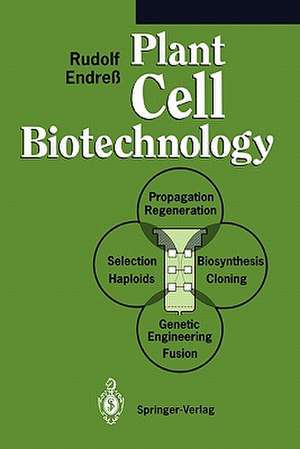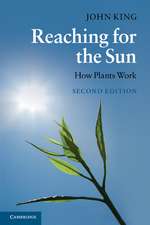Plant Cell Biotechnology
Autor Rudolf Endressen Limba Engleză Paperback – 14 dec 2010
| Toate formatele și edițiile | Preț | Express |
|---|---|---|
| Paperback (1) | 1220.12 lei 6-8 săpt. | |
| Springer Berlin, Heidelberg – 14 dec 2010 | 1220.12 lei 6-8 săpt. | |
| Hardback (1) | 1226.42 lei 6-8 săpt. | |
| Springer Berlin, Heidelberg – 22 mar 1994 | 1226.42 lei 6-8 săpt. |
Preț: 1220.12 lei
Preț vechi: 1487.96 lei
-18% Nou
Puncte Express: 1830
Preț estimativ în valută:
233.54€ • 253.77$ • 196.30£
233.54€ • 253.77$ • 196.30£
Carte tipărită la comandă
Livrare economică 21 aprilie-05 mai
Preluare comenzi: 021 569.72.76
Specificații
ISBN-13: 9783642081651
ISBN-10: 3642081657
Pagini: 368
Ilustrații: XIV, 353 p.
Dimensiuni: 155 x 235 x 19 mm
Greutate: 0.51 kg
Ediția:Softcover reprint of hardcover 1st ed. 1994
Editura: Springer Berlin, Heidelberg
Colecția Springer
Locul publicării:Berlin, Heidelberg, Germany
ISBN-10: 3642081657
Pagini: 368
Ilustrații: XIV, 353 p.
Dimensiuni: 155 x 235 x 19 mm
Greutate: 0.51 kg
Ediția:Softcover reprint of hardcover 1st ed. 1994
Editura: Springer Berlin, Heidelberg
Colecția Springer
Locul publicării:Berlin, Heidelberg, Germany
Public țintă
ResearchDescriere
In the past there were many attempts to change natural foodstuffs into high-value products. Cheese, bread, wine, and beer were pro duced, traditionally using microorganisms as biological tools. Later, people influenced the natural process of evolution by artificial selection. In the 19th century, observations regarding the depen dence of growth and reproduction on the nutrient supply led to the establishment of agricultural chemistry. Simultaneously, efforts were directed at defining the correlation between special forms of morphological differentiation and related biochemical processes. New experimental systems were developed after the discovery of phytohormones and their possible use as regulators of growth and differentiation. In these systems, intact plants or only parts of them are cultivated under axenic conditions. These methods, called "in vitro techniques", were introduced to modern plant breeding. In the field of basic research, plant cell cultures were increasingly developed and the correlations between biochemical processes and visible cell variations were explored further. It should be possible to manipulate the basic laws of regulation and the respective biochemi cal processes should be regarded as being independent of morpho logical processes of plant development.
Cuprins
1 Introduction.- 2 Basic Techniques.- 3 Culturing of Plant Cells.- 4 Obtaining and Culturing Haploid Cells.- 5 Plant Regeneration: Morphogenesis.- 6 Plant Cells as Producers of Secondary Compounds.- 7 Immobilization of Plant Cells.- 8 Use of Altered or Previously Unused Genetic Information.- 9 Storage of Cell Cultures.





